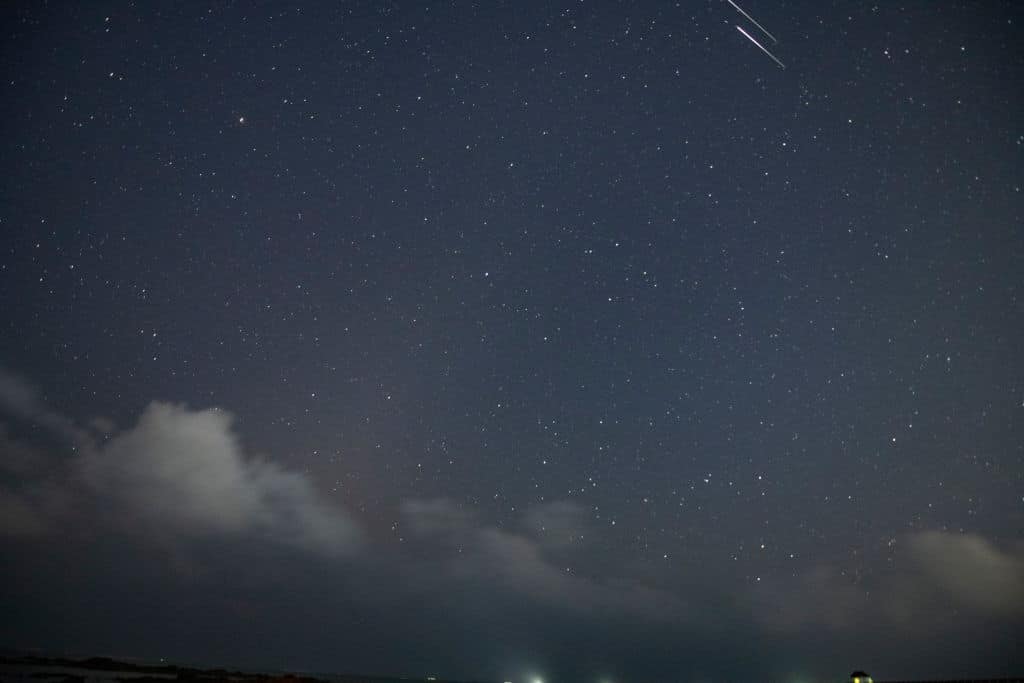TOPLINE
The Geminids meteor shower—which NASA calls one of the “best and most reliable” yearly meteor showers—returned on Sunday and is slated to run through December 24, with a peak in three weeks, though no equipment is required to see it.
KEY FACTS
The shower peaks between December 13 and December 14, but it may still be visible beforehand with the proper observing conditions, NASA reports.
The shower is best viewed during the night before dawn, and because it usually starts earlier than other showers, between 9 p.m. and 10 p.m., it’s considered one of the best for young viewers, according to NASA.
A dark, open sky away from city or street lights is ideal, and the best viewing position is laying flat on the back with feet facing the south—binoculars and telescopes typically aren’t needed.
Though it will be visible everywhere in the night sky, from Earth’s perspective, the Geminids meteor shower appears to originate from the direction of the Gemini constellation, which is northeast of the Orion constellation, according to Space.
The Geminids meteor shower is fast, very bright, and mainly made up of white meteors, though there are some yellow, green, blue, and red ones, according to the Royal Museums Greenwich.
BIG NUMBER
120. That’s how many meteors can be seen per hour during the shower’s peak season, according to NASA. This makes the Geminids stream one of the “strongest” annual showers. In comparison, the Leonids shower—which peaked last weekend—has about 15 meteors per hour, the Orionids shower has 23 and the Perseids shower peaks at around 100 meteors per hour.
Forbes Daily: Get our best stories, exclusive reporting and essential analysis of the day’s news in your inbox every weekday.Sign Up
By signing up, you accept and agree to our Terms of Service (including the class action waiver and arbitration provisions), and you acknowledge our Privacy Statement.
KEY BACKGROUND
The Geminids meteor shower was first discovered in the 1800s, and the first showers only displayed between 10 and 20 meteors per hour. The Geminids stream has since grown into one of the “most intense” meteor showers, and is unique because it’s one of the only showers to originate from an asteroid, according to a June paper published in the Planetary Science Journal. Most meteor showers are made of comet debris, but the Geminids stream originates from the asteroid 3200 Phaethon. Because comets are made of ice, when they travel close to the Sun, they melt and release a trail of ice and dust that eventually turns into a meteor shower. However, because asteroids are made of metal and rocks and aren’t affected by the Sun’s heat, many scientists are confused how 3200 Phaethon formed a meteor shower. The most likely answer is the asteroid violently collided with another object, causing the trail of debris that makes up the Geminids stream, according to the Planetary Science Journal study.
TANGENT
This year, the Geminids stream’s peak coincides with the new moon, which falls on December 12, according to the American Meteor Society. The moon will be 1% full around this time, making the night’s sky dark and creating an ideal viewing environment for the meteor shower.
FURTHER READING
Geminid meteor shower 2023: When, where & how to see it (Space)
Leonid Meteor Shower Peaks Tonight—Here’s How To Watch (Forbes)
